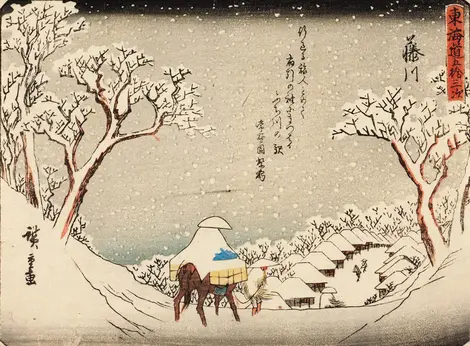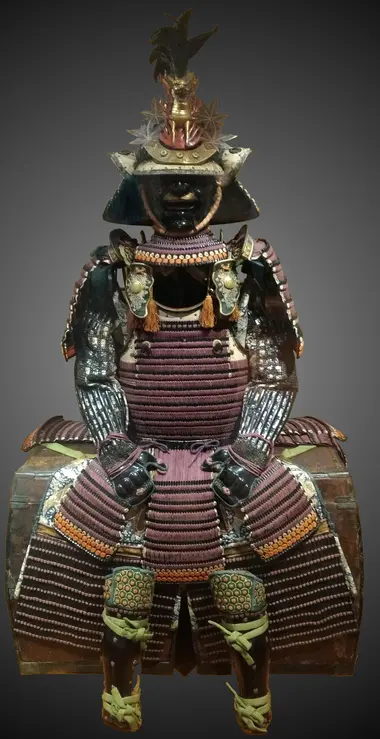Enjoying Japan in Paris at the Guimet Museum
Discover Japanese art in Paris
Rare or exceptional works of art, everyday objects, tea house or Japanese-inspired garden: Japan is magnificently represented at the National Museum of Asian Arts-Guimet. Before leaving or after a trip to Japan, discover the country of the Rising Sun through its art. The National Museum of Asian Arts-Guimet (abbreviated as Mnaag) includes the Guimet Museum, the Heidelbach Hotel and its garden and the Ennery Museum. Japan is richly but differently represented in each of these three establishments. Journey to Japanese land…
The Guimet Museum
For Asia enthusiasts, discovering the Guimet Museum is always a moment of great intensity. A window opens on this fascinating continent, on its treasures. Mysterious Buddhas, delicate porcelain or colored prints , we discover all the wonders of Asia step by step.
The Guimet Museum has some 11,000 Japanese pieces and often organizes temporary exhibitions of Japanese works.
How these Japanese works arrived at the Guimet Museum
The first collections date from the very beginning since the founder of the future museum, Emile Guimet , made a stopover in Japan during his trip around the world in 1876 and brought back many works.
From 1945, the Musée Guimet will also receive all the works from the Asian arts department of the Louvre, which mainly included works from China and Japan.
In 1991 the Guimet museum opened in an annex building, at 19 avenue d'Iéna, the Buddhist Pantheon, presenting part of the collections brought back from Japan by Emile Guimet.
Very recently, the museum acquired an album of Tokaido prints and a creation, " Reduction ", by Takahiro Kondo, considered one of the greatest contemporary Japanese artists. It is a work that is part of a set of porcelain sculptures created from casts made on the artist's own body, in response to the Fukushima disasters in March 2011.
The Japanese collections of the Guimet Museum
These are collections of inestimable value since they include around 11,000 works that cover all periods of the history of Japanese art and illustrate its evolution.
A story that begins in the Jomon period and is represented by terracotta vases and statuettes dating from the 3rd- 2nd millennia BC .
The Japanese Middle Ages are represented by samurai outfits, saber blades, and statues of Buddhas and other deities.
Sculptures representing Buddha or boddhisattvas, Zen monks or guardians of temples show the evolution of Japanese Buddhist art.
Paintings on silk, sumi-e (ink paintings), kakemono (painting or calligraphy that is suspended), makimono (manuscript scrolls), screens, lacquers, ceramics and porcelain testify to the degree of sophistication not only of the works of art but also objects of daily use such as kimonos, netsuke (clothing accessory), inrô (small boxes) or even utensils used for the tea ceremony. The museum also has a collection of Noh theater masks .
These collections would be incomplete if they did not include the famous Japanese prints, Ukiyo-e ("Pictures of the Floating World"). The museum has nearly 3,000.
Ennery museum
The museum is located in the former private mansion of Adolphe Philippe d'Ennery (1811-1899) and his wife Clémence d'Ennery , a great lover of Asian and particularly Japanese art. We owe the latter the acquisition of surprising collections and the layout of the premises has remained faithful to what it was in the 19th century. We discover a unique universe where Madame d'Ennery's pronounced taste for folklore and fantasy is expressed.
The museum includes nearly 3000 objects from Japan . The collections are varied and include unique pieces. They offer the possibility of discovering another facet of Japanese art through more "fantastic" works. The collection of netsuke and okimono (figurine a little larger than the netsuke ) is one of the largest in the world. In addition to these objects dating mostly from the end of the 18th century and the beginning of the 19th century , there are pieces from the Kamakura period (1185-1333) and Muromachi period (1336-1573).
It is important to note that a large part of the collections was acquired during the 19th century , when Japonisme was in full expansion in Europe.
- The visit of the Ennery museum takes place every Saturday at 11:30 a.m. by reservation only.
- resa@guimet.fr or 01 56 52 53
The garden of the Heidelbach hotel
Another must-see place for lovers of Japan, the garden of the Heidelbach hotel offers a pure moment of serenity and transports visitors to a world apart, that of Japanese refinement.
Recently refurbished, the garden showcases a magnificent tea house.
The modernism of the design harmonizes with Japanese elements , such as this standing stone located in the middle of an island of moss and white gravel, or even the choice of plants: Japanese cherry trees, azaleas, dwarf bamboos, pines. The latter reveal part of the tea pavilion, the centerpiece of this enchanting place.
The tea pavilion – or chashitsu – is the work of architect Nakamura Masao. Built in 2001, the best Japanese craftsmen of the time were called upon. It is not only an ornamental piece but a real place created for the tea ceremony and where the different Japanese tea schools can come to practice their ancestral art.
- The garden of the Heidelbach hotel is only accessible during conference visits and exceptional events.

















